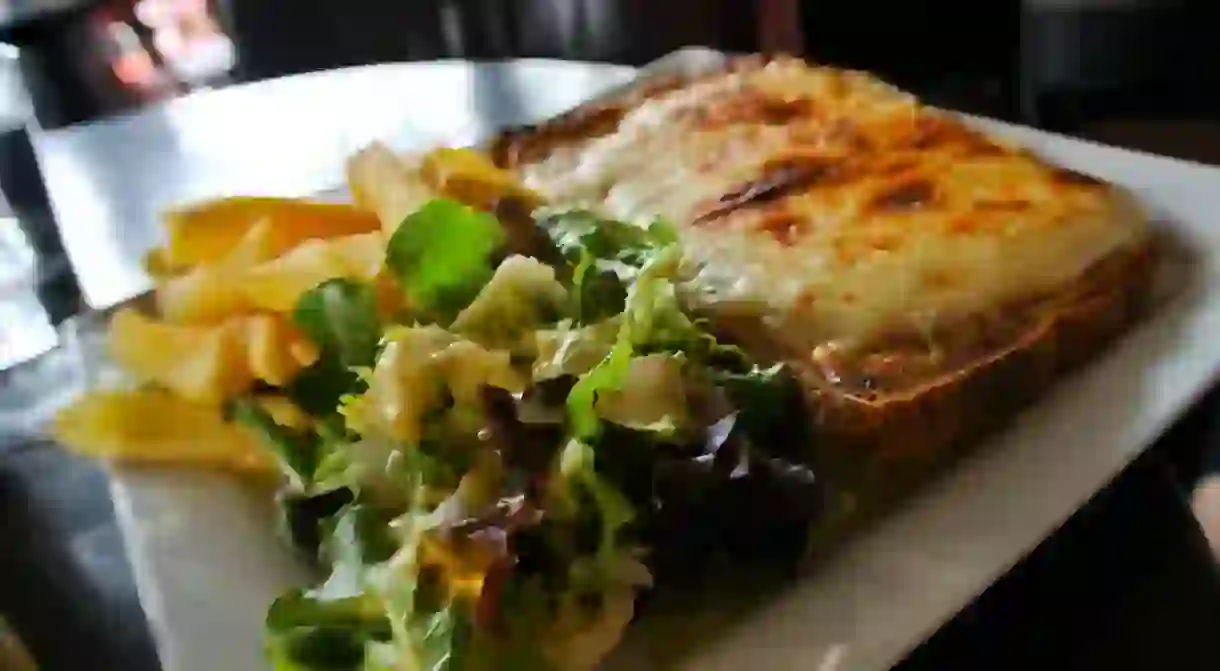A Brief History of the Croque Monsieur, France's Cheese Toastie

You can find a Croque Monsieur on most French bistro or cafe menus; it’s the French version of toasted cheese. Usually served with chips or salad, it forms a staple of the French fast food cuisine and it is delicious. Here’s our brief run-down on everything you need to know about it.
The title Croque Monsieur comes from “croquer”, to bite and “monsieur” meaning mister. It’s literally a gentleman’s sandwich. It first appears in literature in a work by Proust, In Search of Lost Time in 1918, but it had featured on menus in Paris as early as 1910.

It is made of simple ingredients found in any French home; bread, cheese and ham. The bread is usually a more sweet version of normal bread, a bit like brioche (“pain de mie“). Sometimes it can be dipped in egg before being grilled, although many households make it just using normal sliced bread. It must always be white bread – so be warned, the dish is not particularly healthy or low on fat!
The cheese is normally Gruyère or Emmental although often Comte is used (which is more of a ubiquitous French cheese and forms the staple of many French fridges). The cheese is normally placed on top as well as inside and the sandwich is then baked or fried so that the cheese melts and the bread becomes a little crusty.
Sometimes, restaurants add a bechamel sauce to give added flavour. Bechamel forms the basis of many French sauces. Made of milk, fat and flour, it is mixed together and poured over the top.

Sometimes, an egg is added on top, forming a “Croque Madame”. The name is supposed to relate to a woman’s hat and became common in the 1960s. A “Croque Mademoiselle” is a much rarer vegetarian version, minus the ham, and with cucumber and chives.

The same dish can be found in many other countries. In England, it’s a toastie or Welsh Rarebit. In the Netherlands, it’s a tosti, in the US, they call it the Monte Cristo, and in Catalonia, it’s known as a bikini. It’s delicious, whatever the name.













